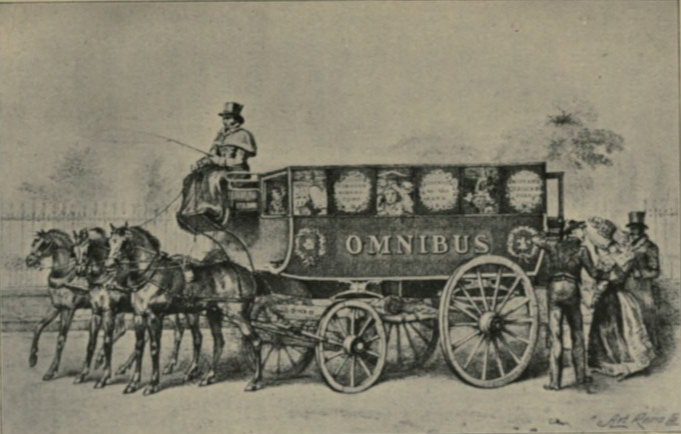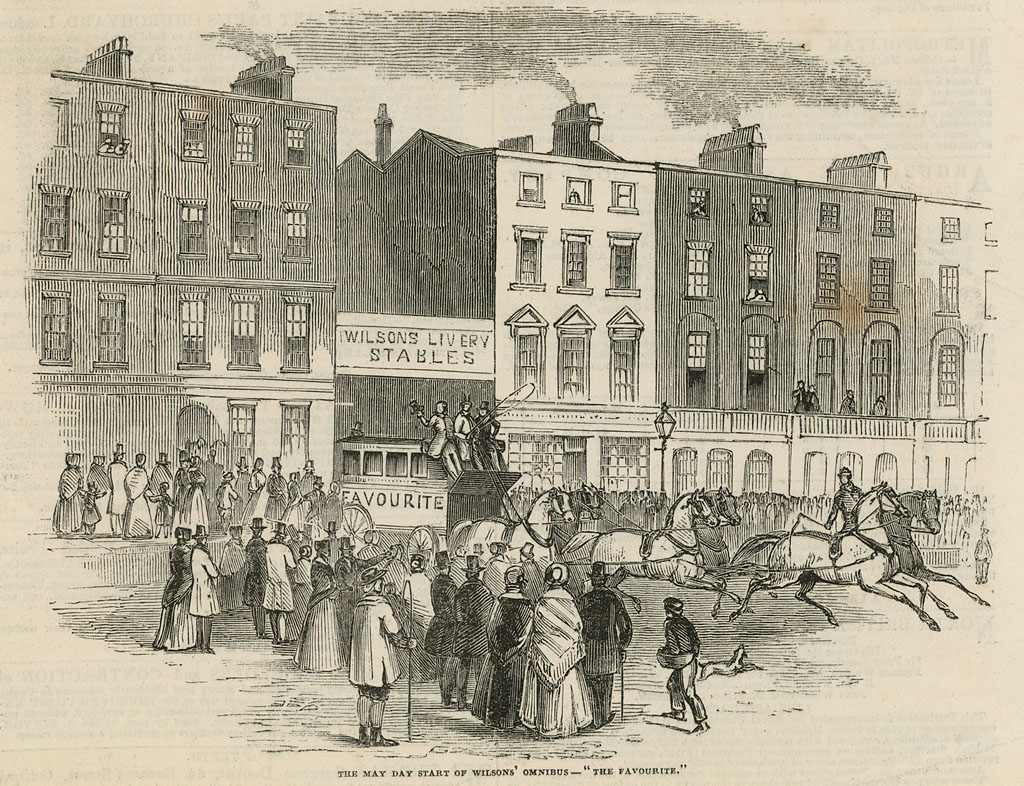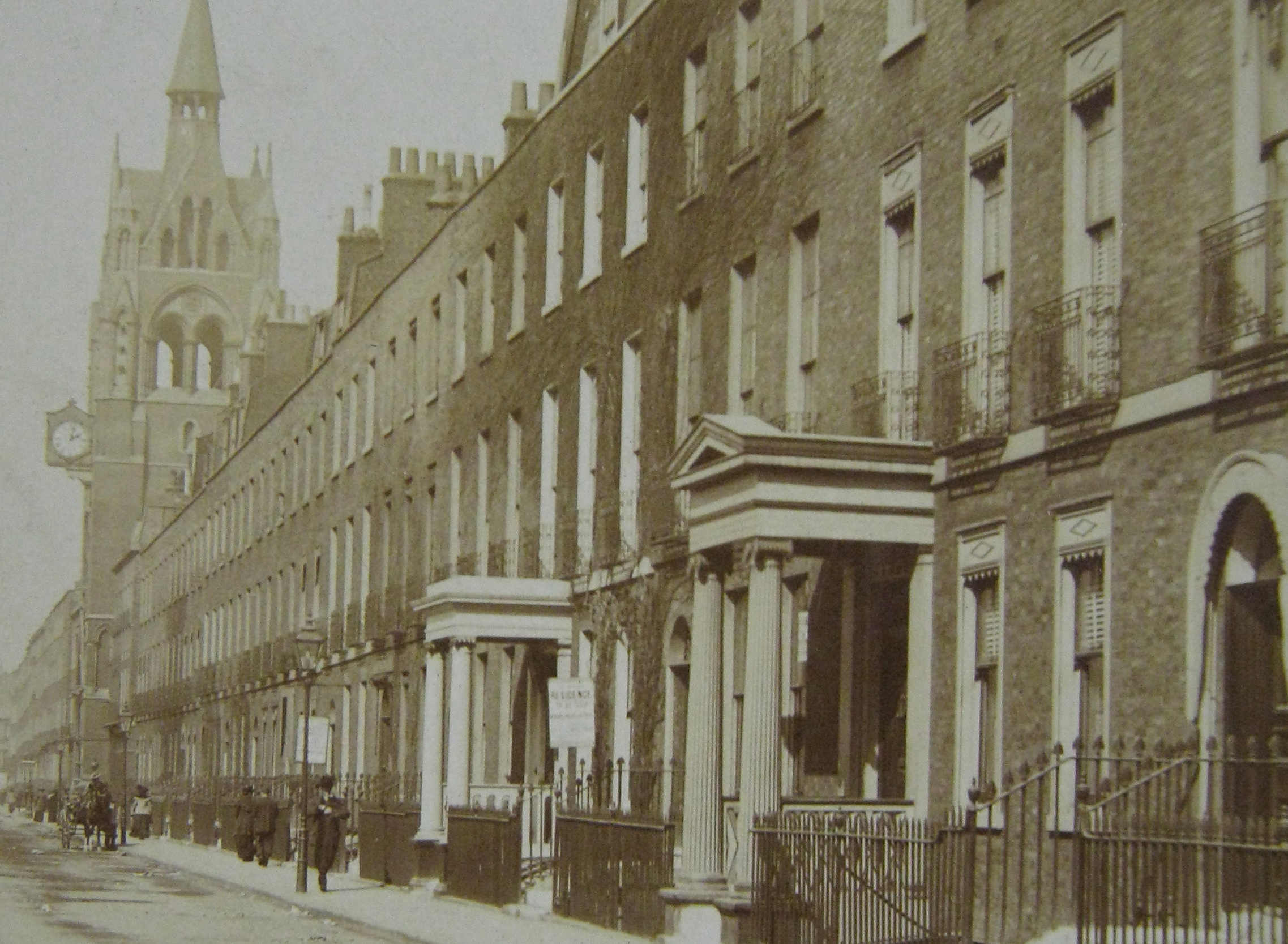A short time ago I was researching the history of a house in Highbury, north London, and discovered an intriguing character in the house during the 1860s. In 1863, Mr John Wilson and his wife Mary moved to the house, but by this time Mr Wilson had retired and it was only through delving into his past did I uncover the story of a remarkable career. It turns out that Mr John Wilson was one of the first omnibus proprietors in London.
Along with his sister Elizabeth, John Wilson established a thriving omnibus or horse bus business transporting clerks and city workers to and from the City of London from the growing suburbs of north London. The origins of the omnibus company have been tricky to track down, but later records show that John and his sister Elizabeth established the ‘Wilson’s Omnibus’, often known as the ‘Wilson’s Favorite [sic]’ sometime during the 1830s. By the time of the 1841 census John was recorded as a ‘Coach Proprietor’ in Finsbury, Islington, and along with his sister, ‘Mrs Wilson of Holloway’, owned one of the largest omnibus companies in London.
A painting by James Pollard shows the Wilson’s Favorite at Islington Green in 1852. Held in the London Transport Museum collection – follow the link below to view.
‘Favorite omnibus at Islington Green’ by James Pollard, 1852

The first omnibus service in London was established in 1829 by George Shillibeer, running from Paddington along Marylebone Road to the City, but it wasn’t long before other entrepreneurs were taking up the opportunity of offering transport to fee-paying passengers. In the early years omnibuses – or horse buses – were named (unlike numbered buses that we have today) and the Wilson’s was known as the ‘Favorite’ or ‘Favourite’. By 1839 Elizabeth and John Wilson were recorded as having 11 horse buses.
This was an ideal time to be investing in this new type of enterprise as the building of new streets and houses was beginning to spread to the outskirts of London, with growth in the north to places like Islington and Highbury, which meant there were many city workers who required transport to work. Islington was an ideal location for a new bus route and the Wilson’s became known for their bus route from north London into the City.

The Wilson’s Favorite became a popular and highly successful omnibus company. In 1853 John Garwood wrote in The Million-Peopled City that the Wilson’s ‘Favorite’ was ‘on the whole, as well regulated as, if not better than, any other which exists.’ The Wilson’s Omnibus even featured in Charles Dickens’ All the Year Round weekly journal, when in 1863 the writer told of how he would watch the ‘green favorites, boldly declaring the ownership of ‘Elizabeth and John Wilson’ – grand ‘buses, those, with drivers and conductors in green liveries, always renewed (with an accompaniment of nosegay for button-hole, and favours for whip, and rosettes for horses’ ears) on the occasion of the Queen’s birthday…’ In 1902, Henry Charles Moore states in his Omnibus and Cabs that ‘Mr Wilson was the largest proprietor in London, and his vehicles, which were known all over the Metropolis, had the reputation of being exceedingly well conducted.’
Another painting by James Pollard shows the Wilson’s Favorite in 1845. Held in the Museum of London collection – follow the link below to view.
‘A Street Scene with Two Omnibuses’ by James Pollard, 1845
In 1856 John and Elizabeth Wilson sold their omnibus company to the new and rapidly expanding ‘Compagnie Generale des Londres’ – renamed the London General Omnibus Company (LGOC) in 1858. The LGOC later became the biggest and most prominent omnibus company, buying up a number of local companies and spreading their presence across London. When the Wilson’s sold their firm they had over 50 horse buses, 500 horsed, and around 180 employees.
John Wilson died in the house in Highbury in 1866 leaving around £30,000 (well over £1 million in today’s money) to his wife Mary.

